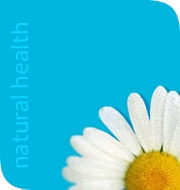 |
 |
 |
|||||||||||||||||||||||||||||||||||
|
All About Body-Centered Holistic Practitioners
Chiropractors and Holistic Methods Chiropractors are, perhaps, one of the most common types of body-centered holistic practitioners. Chiropractors study the human skeletal system and strive to understand how different bones work together to create harmony within the body. A chiropractor often focuses on the spinal column during treatment, adjusting the column for optimal alignment and spacing. Chiropractors will generally begin a session by listening to the patient and noting areas of discomfort which the patient may be experiencing. Neck pain, lower back pain, shoulder pain, tingly arms and legs, headaches, and even foot pain can be alleviated by adjusting the vertebrae in the human body. Yoga and Pilates Instructors Yoga and Pilates are two examples of body-centered holistic methods that rely on motion rather than touch. Instructors in yoga and Pilates use a combination of controlled movement and steady breathing to relax tension in the muscles and bones and promote internal and external healing. Yoga is an ancient art form that has been used for many different types of healing while Pilates is a relatively newer method that features weight loss techniques and strength building exercises. Acupuncture and Acupressure Acupuncture is an ancient Asian form of medicine that relies on pressure points and nerve endings throughout the entire body. This is a highly misunderstood form of body-centered holistic medicine, and many laypeople have skepticism or doubt regarding the effectiveness of acupuncture or acupressure. The truth is, the nerve endings of the human body create a complicated network, and often pressure on one nerve ending can have an incredible effect on another part of the human body. Acupuncture can be used to eliminate joint or muscle pain, alleviate nausea, cure headaches, improve bowel function, or even improve mood. Massage Therapy Massage therapy is a very popular form of holistic medicine that involves movement and touch in order to achieve relief from pain and also to help the body to relax. Many consumers get regular massages because their jobs are stressful or they carry a lot of emotional and physical weight. Licensed masseurs use a combination of aromatherapy oils and steady, high pressure touch to work knots and kinks out of muscles and realign the spine and other joints. Massage therapy is one of the most widely accepted forms of holistic medicine and are considered to be a luxury in the United States. Movement Therapy Movement therapy involves any holistic therapy method that relies on careful, controlled movement or stretching in order to improve health or well-being. Comments for this post are closed |
||||||||||||||||||||||||||||||||||